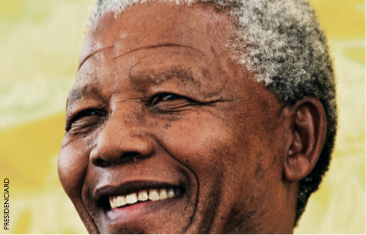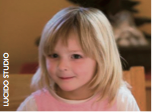TUESDAY, 20 MAY 2014
“No one is born hating another person because of the colour of his skin, or his background or religion. People learn to hate, and if they can learn to hate, they can be taught to love, for love comes more naturally to the human heart than its opposite.” These words capture Nelson Mandela’s message to the world.However, developmental psychologists have shown that new-born babies are in fact racist. Neonates, despite their near-blindness, are rapidly able to distinguish between ethnicities by both sight and sound, showing signs of fear and distrust towards ethnicities different from those of their caregivers. There is similar evidence for discrimination on the basis of religion, gender and socio-economic background as soon as these categories are identified by the maturing child. Apparently, this tendency need not be taught. And though it might be overwritten through education, the residue can be shown to linger, unvoiced, in nearly everyone.
One common approach to teaching children tolerance is to try and avoid drawing attention to differences between societal groups. However, it seems that children seek out these distinctions, using them to form divisions and ultimately prejudices. Brigitte Vittrup gave 5-7 year old white children a questionnaire of the form “What proportion of [white/black] people are [positive/negative adjective]?” The children, in their innocence, were more than willing to assign a higher proportion of black people the negative adjectives and a higher proportion
of white people to the positive ones. Vittrup concluded that this apparent open racism was due, in part, to the parents’ well-meaning attempt to be ‘colour-blind’ by not discussing race openly. Perhaps they hope, like Mandela, that quashing racist ideas is simply a case of not teaching them.
A few years later, very few children are openly racist. But have these children learned to be genuinely accepting, or have they simply discovered that racism is not socially acceptable? This same question can be asked of adults, of course, and to answer it we turn to a more subtle measure: the Implicit Association Test (IAT), developed by Anthony Greenwald. The IAT uses a basic psychological measure–reaction time–to reveal attitudes that people may be unwilling to express openly. In the simplest version of the experiment, the participant is asked to make one of two categorization tasks. Either a name appears on the screen, for example ‘Nelson Mandela’, which must be categorized as either ‘white’ or ‘black’, or an adjective appears on the screen, for example ‘happiness’, which must be categorized as either ‘pleasant’ or ‘unpleasant’. The rub comes in the fact that the same set of two keys is used to make these categorizations. In one testing block, the participant uses one key to make the ‘black’ or ‘unpleasant’ choice, and another to make the ‘white’ or ‘pleasant’ choice. In the other, these pairings are reversed: one response means either ‘black’ or ‘pleasant’, while the other means either ‘white’ or ‘unpleasant’. White participants, to varying degrees, respond more slowly in the latter testing block than in the former, implying that the association between ‘black’ and ‘pleasant’, or between ‘white’ and ‘unpleasant’, is harder to make than the association between ‘black’ and ‘unpleasant’, or ‘white’ and ‘pleasant’.
This experiment has been refined and extended in a number of ways: to other races, other group divisions such as sex or status, or to other associations, such as more specific stereotypical ideas. In all cases, the results paint a gloomy picture of our innermost, implicitly held attitudes. Many studies, as well as the IAT, point to the same conclusion. Despite the veneer of socially acceptable egalitarianism, it seems Avenue Q had it right: “everyone’s a little bit racist”.
To understand these alarming findings, we turn to Henri Tajfel and John Turner’s ‘social identity theory’. Tajfel and Turner claim that we instinctively divide everyone into two groups: the in-group and the out- group. The in-group is populated with ‘people like us’: friends, family and anyone who we want to be associated with. These are the people to whom we naturally extend trust and affection, and are more likely to pay favours. The out-group is populated with everyone that didn’t make the cut. Our instinct is to distrust them, avoiding them as much as possible. When this tendency goes unchecked, we begin to homogenise them, building up a stereotypical list of skills, attributes and attitudes. We selectively remember and exaggerate positive information about the in-group, while doing the same for negative information about the out-group.
Perhaps surprisingly, discrimination isn’t reserved for the broad and salient categories of sex, status or race. It operates at a hair trigger, sorting people along any dimension. Tajfel developed the idea of the ‘minimal group’ to demonstrate just how easily social identities can arise. He asked participants to select which of two pieces of abstract art was their favourite, and established two groups on this basis. He found the same differences in treatment emerged, even using this apparently meaningless distinction, between the in-group and the out-group. Members of one group were more likely to stereotype members of the other group, and ascribed more positive traits to members of their own. When given a choice between ways to divide cash prizes, they favoured members of their own group, and sought to maximize the difference in the prizes received between their group and the other–even if this meant accepting a smaller prize themselves.
Anthropologists and evolutionary psychologists have a ready explanation for this ingrained behaviour. They argue that it is ultimately because our social skills evolved in environments with closely-knit tribal communities, numbering no more than about 150 people. Members of other tribes were, at best, competitors for resources and, at worst, hostile enemies. A premium was placed on rapidly distinguishing between friend and foe, and on clearly demonstrating one’s own tribal allegiance. This remained even as societies evolved into larger units. Nationalism and religious allegiance allowed societies full of strangers to develop mutual trust through a sense of shared identity, which had a flipside: a common sense of distrust, directed at the similarly larger out- groups. Today, as Seth Godin and many others have pointed out, we see our tribal mentality resurfacing everywhere from the workspace, to the football club and the blogosphere, carving out groups from the mass of people we encounter, and protecting us by labelling everyone we meet as friend or foe.
It seems as though our tendency towards group discrimination is here to stay. Although we struggle to supress it, the good news is that it’s flexible enough to be harnessed for good. Mandela demonstrated a vital tool that is being used today to promote harmony in the ghettos of Detroit. By donning a Spingboks jersey, he offered the people of South Africa a new in-group which cut across the boundary of race. Rejecting old group divisions in favour of new and inclusive ones harnesses our innate group mentality for positive ends.
With the historical progression of society into ever-larger units we can already see a corresponding expansion of the in-group. Group mentality now operates at the global level. Early anti-apartheid action failed, arguably, because it emphasised black rights. It entrenched the group divide, making it impossible for either white or black South Africans to forget their own sense of allegiance. Mandela, and every great civil-rights activist, succeeded by instead emphasising the traits that transcend all global categories, uniting South Africans in their shared humanity. In this way, Mandela created a new in-group, to which everyone belonged.
So, Mandela was at least partly right. We can be taught to love. However, this fraternal love has a dark side: a natural tendency to discriminate between insiders and outsiders. It’s only by coming to terms with our innate psychological foibles that we can mobilise them for good.
Alex O’BryanTear is a 2nd year PhD student at the Department of Psychiatry




